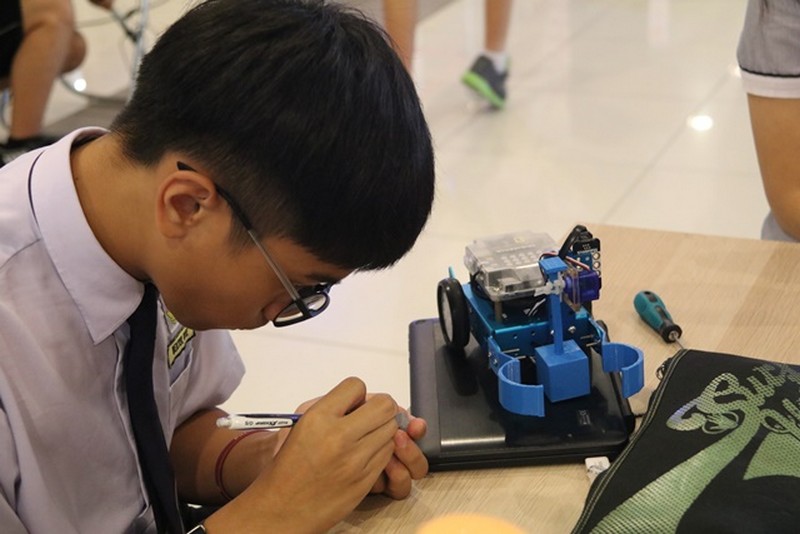
The National Fourth Industrial Revolution (4IR) Policy is introduced with the goal to increase the country’s readiness to harness the potential of 4IR.
On 1 July 2021, it was officially launched as a broad, overarching national policy that drives coherence in transforming the socioeconomic development of the country through ethical use of 4IR technologies.
Malaysia, like the rest of the globe is experiencing a shift in every aspect of lives as 4IR technologies are used in their everyday life through the use of technologies such as artificial intelligence (AI), autonomous vehicles (AV) and the Internet of Things (IoT).
4IR have the potential to improve the wellbeing of society by raising income levels, increasing societal cohesion, improving efficiency, providing convenience, safety and security, and better protecting and conserving limited natural resources.
Apart from that, 4IR technologies present new and promising opportunities for Malaysia to attain a high-income nation status by elevating strengths and advancing the existing competitive edge for the betterment of the society.
Human Capital Development
In terms of human capital development, existing and future workforce needs to be equipped with the necessary skills to meet changing industry demands.

This is because the skills demanded for the workforce will also change as 4IR transforms sectors and industries.
It is important to enhance the readiness of existing workforce to thrive in a fast-changing work environment.
This will enable industries to adopt and harness 4IR
technologies to uplift productivity and competitiveness
Under this thrust, among the strategies to develop the nation’s human capital includes:
• Industry-led upskilling and reskilling of the existing workforce for the 4I
• Match the talent pipeline with the future needs of the economy
• Equip future workforce with 4IR skill sets
• Provide equal access to 4IR opportunities across the population
• Upskilling and reskilling the civil servants
(Source: National 4IR Policy)
Infrastructure Development
Investment in digital infrastructure is key to drive the adoption of 4IR technologies throughout the nation.
Basic infrastructures include those such as water, electricity, connectivity, telecommunication and roads.
Under this thrust, among the strategies are:
• Strengthen digital infrastructure via strategic investment projects
• Minimise disparity in access to technologies across the nation
• Enhance public sector digital infrastructure
(Source: National 4IR Policy)
Regulation Improvement
Due to the fast-changing pace of technologies, the government’s regulatory approach needs to be more agile and facilitative.
Existing sector-specific regulations will be reviewed to cater to changing business environment and work culture.
Under this thrust, among the strategies are:
• Advocate anticipatory and agile regulatory approach in response to the 4IR
• Safeguard the society from irresponsible use of technology
• Update legal framework governing personal data management and cyber security to build trust in society
• Update regulatory approach and review regulations that hinder the application or development of 4IR technologies
(Source: National 4IR Policy)
Technological Adoption and Innovation
As 4IR is evolving, it is important for Malaysians to seize the opportunity of 4IR technology innovation and adoption.
Under this thrust, the strategies include:
• Facilitate the adoption of 4IR technologies among local businesses through integrated support
• Enhance financial support to facilitate 4IR technology adoption and development
• Support 4IR technology innovation focusing on solving social and environmental issues
• Prioritise the use of 4IR technologies for policy formulation, implementation, regulatory functions and public service delivery
(Source: National 4IR Policy)

By 2030, the intended outcomes of the National 4IR Policy are based on the three policy missions:
• Enhanced quality of life of the rakyat reflected by the improvement in the MyWI, from 124.4 in 2018 to 136.5 in 2030.
• 30 per cent uplift in productivity, across all sectors by 2030, compared to 2020 levels, achieve 3.5% gross expenditure on R&D (GERD) to GDP as well as increase in investment in 4IR-enabling infrastructure and the number of home-grown 4IR technology providers.
• Improvement in Malaysia’s ranking in Environmental Performance Index from 68 among 180 countries to top 50 in 2030 with the preservation of ecological integrity using 4IR technologies
(Source: National 4IR Policy)

In creating a conducive ecosystem for the country to seize opportunities and mitigate risks arising from the 4IR, the National 4IR Policy outlined the following four key policy thrusts;
• Equip the rakyat with 4IR knowledge and skill sets
• Forge a connected nation through digital infrastructure development
• Future-proof regulations to be agile with technological changes
• Accelerate 4IR technology innovation and adoption
(Source: National 4IR Policy)
Related articles :




